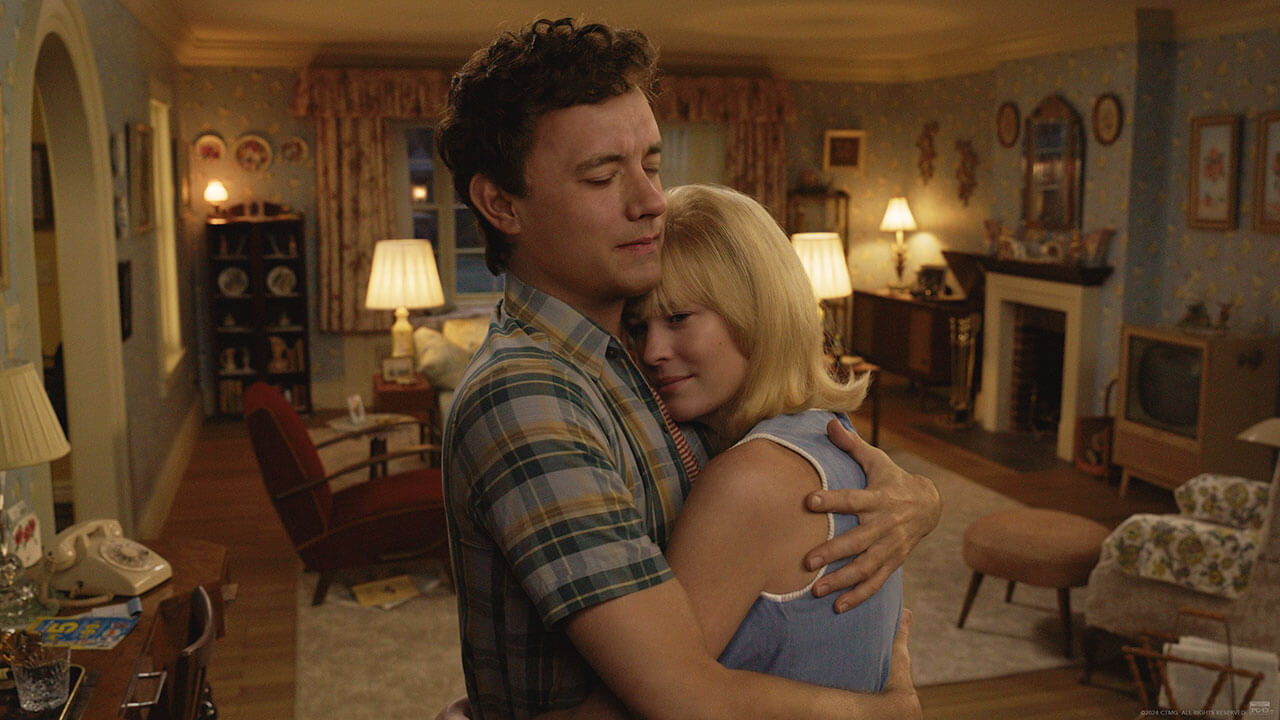This review appears in the Spring 2019 issue of Modern Age. To subscribe now, go here.
On the last Sunday in February, the Academy of Motion Picture Arts and Sciences declined to reward a film that grappled deeply with social questions and film history, a sterling example of cinema as a living art with a sense of continuity with the past. Perhaps it was snubbed because it was in a foreign language; perhaps because it was distributed by Netflix; perhaps because it wasn’t fast-paced or plot-driven enough for those brought up on the usual Hollywood fare.
I’m not talking about Roma, Alfonso Cuarón’s love letter to the Mixtec-speaking housekeeper who helped raise him. Roma was, indeed, widely lauded, both in the United States and in Mexico, for making an indigenous woman like Cleo the central character. Its black and white cinematography and lingering shots of the processes of domestic labor, even the title (which refers to a Mexico City neighborhood where the film takes place), inevitably recall Italian neorealist classics like Rome, Open City that also made the struggles of working-class characters the focus of their dramas and suggest that this is the kind of film that should both comfort the afflicted and afflict the comfortable.
In spirit, though, Roma is as “Hollywood” as the much-maligned Best Picture winner, Green Book. While Roma’s central character is Cleo, its gaze and its perspective are Cuarón’s. And the story of two long-suffering women—white mistress and indigenous servant—supporting each other in a world of cruel men is more likely to make a Hollywood audience comfortable than conflicted. Which is surely one reason it wasn’t snubbed at all, winning awards for direction, cinematography and foreign-language film. Much as The Favourite is an old-school bitch-fest dressed up in period garb, Roma is a weepy rendered in the sober gray scale and long takes of serious cinema. That is not to slight either film, both of which I found beautiful and moving, and admirable in their mastery of the craft. But old-school Hollywood films had these qualities in abundance, and they do not challenge our expectations of cinema.
If you are looking for something more genuinely discomfiting, I cannot do better than to recommend Happy as Lazzaro (Lazzaro felice) by the Italian writer-director Alice Rohrwacher. It was not nominated in any category and could easily be forgotten entirely if movie lovers don’t seek it out. I hope they do—and discover a trenchant and fascinating meditation on the social revolution that has taken place over the past fifty years, and on cinema’s ability to help us confront and understand change.
Happy as Lazzaro takes place among a community of tenants in the fictional Italian town of Inviolata. The milieu seems familiar from the work of those same Italian neorealists, a world of deep poverty but vivid characters on whose lives we seem almost to be eavesdropping. We see them work, we see them rest (sleeping a dozen to a room in their hovels), we see them celebrate. The town’s name does not imply an Edenic paradise; life there is hard, even brutal. But it has a seemingly natural order to it.
From early on, though, there are indications that this world is more complex and less natural than it appears. Specifically, it is difficult to place precisely when the film is set. The social relations seem timeless, but that actually means that they are antique. The tenant farmers are as tied to the land as they would have been in the eighteenth century. A couple who wishes to move to the city is forbidden to do so by the Marchesa’s agent, and they meekly obey. Year in and year out, these people harvest tobacco for the Marchesa, only to wind up further in debt when the costs of their tenancy are deducted from their purported wages, which they never see.
Yet there are signs that the world we are in is far more modern than those relations imply. There are electric lights (used sparingly) and diesel-fueled trucks, and occasional articles of clothing that hail from the 1970s or even later. When the Marchesa’s son, Tancredi, appears, he sports a tattoo, his hair is cut in a New Wave style, and he listens to a Walkman.
There is a prosaic reason for all this—the story is based on an actual scandal where an isolated town was kept ignorant of the end of serfdom for decades. But the temporal confusion is important for reasons that have nothing to do with plot. Because the world is familiar from the past and approached in a cinematic style that recalls the cinema of a past era, we are drawn inevitably into a kind of nostalgia that isn’t really dented by the brutality we observe. Because frankness about poverty and exploitation are themselves a part of the cinematic heritage that the film evokes, they have become familiar and untroubling to us. Against this background of nostalgia, the intrusions of modernity shock us awake and remind us to be scandalized.
We experience a more complicated disturbance to our comfort through our relationship with the town’s most distinctive figure: Lazzaro, the happy man of the title. Lazzaro is a youngster with a disturbingly benign affect and an utter lack of guile. In this hard world, he never has a hard word for anyone and is always eager to help. And he is often asked (or ordered) to help, by villagers and outsiders alike, who treat him with a combination of affection and condescension.
In the context of an antique fable, Lazzaro makes sense as a holy fool. As he gets enmeshed in a scheme—Tancredi holes up with him in a cave, pretending to have been kidnapped so as to wrest money from his mother—it seems the story will go one of two ways. Either Lazzaro’s simple goodness will facilitate some kind of change in the Marchesa or her son, or Lazzaro will be destroyed by his entanglement in that family’s drama. Either possibility makes sentimental sense because they are stories we have seen before.
But this is not the story we think. On his way to the mountain retreat, Lazzaro slips and falls to apparent death, thus ending the plot with Tancredi. Immediately afterward, the previously inviolate village is discovered by the modern world. The authorities are shocked to learn that the Marchesa keeps serfs, pays them no wages, and refuses to let them travel or educate their children. She is trucked off to stand trial, while a bus comes to bring the terrified villagers to a new life in the city.
Again, this could have been the end of the film. Instead, we take another sharp turn, this time toward the fantastic. With the help of a wolf that has been haunting the margins of the film all along, Lazzaro awakens from his sleep of death, only to discover that decades have passed while he is unchanged.
There is no necessary contradiction between social realism and magic realism. Indeed, they had come together before in Vittorio de Sica’s 1951 classic Miracle in Milan. For that matter, there is a scene in Roma that gestures at the fabulous, when Cleo executes a feat of balance and concentration that a famous martial arts instructor says only the most skilled practitioners can accomplish. But if you have a town called Inviolata where a character called Lazzaro dies and experiences a literal resurrection, we have to assume some kind of allegorical message is intended. The meaning of Lazzaro and his return is the dominant question of the rest of the film.
On the surface, the remainder of Rohrwacher’s film can be read as a Christological allegory. Lazzaro returns to the Marchesa’s estate, which he finds has fallen into ruin, and meets two men stealing its remaining treasures. True to his nature, Lazzaro helps them load their truck. When he finally makes it to the city, he discovers that the thieves are companions of the old serfs, who are now homeless, scraping together a living from thievery, robbery, and scams. Meanwhile, the old agent of the Marchesa has a new exploitative niche, auctioning jobs to migrant workers who outbid one another to work for the lowest pay.
Lazzaro helps the former villagers by restoring lost knowledge from the countryside, identifying edible greens that grow near the railroad tracks. They appreciate these supplements to a diet of filched packaged foods, but then decide they’re better off selling them for cash. Finally, he runs into his old friend, Tancredi, who has declined into a slovenly bankrupt but is roused to false hope for recovery by Lazzaro’s return. Tancredi tries to trick a bank into funding a real estate venture, only to be thrown out on his ear. Lazzaro, believing the bank to have stolen his friend’s money, goes to confront them, only to be told that there is no actual money there. He is finally beaten to death by other bank patrons when they discover that he is not a robber and is unarmed except for a toy slingshot.
Standing on its own, the allegory is straightforward, right down to the attempted expulsion of the money changers. But Lazzaro is not returning from, nor promising to return his villagers to, any kind of Eden. We saw the oppressive old world and felt revulsion at the possibility that such conditions could still exist in a modern Western country. And Lazzaro’s place in that world was little more than a glorified errand boy. He was not only unable to ameliorate the oppression; he wasn’t even appreciated for the happiness he embodied.
But he still had a place. The Marchesa justifies her exploitative rule by saying that her serfs don’t really mind being exploited. They expect it, even need it; it is the natural order of the world. Ruling classes have always made justifications like these, which are plainly not the case. The serfs were a functioning society before her arrest, and are also a functioning society after. Their community coheres and even participates in a kind of freedom on the margins of society.
Rather, the transformation the villagers undergo when the Marchesa is arrested is from being oppressed to being excluded, from being on the bottom to being on the outside. The old order was personal in its violence; the new one impersonal. It is a real testament to the film’s empathy without sentimentality that we can feel the gain of that transformation, even though what is gained is merely the freedom of vagabondage.
We never see a glimpse of a world beyond the dark dichotomy of exploitation and false liberation, but we see a mystical gesture toward it. Late in the film, Lazzaro and his band of homeless former serfs pass a church where an organ concert is being performed. Lazzaro steps inside to listen, but the nuns’ response to a crowd of homeless people filing in is to hurry them out, explaining that the concert is private. So Lazzaro leaves. When he does, the music leaves with him, magically separating itself from the church and floating out into the open city night.
Noah Millman is a filmmaker and columnist for The Week.
Founded in 1957 by the great Russell Kirk, Modern Age is the forum for stimulating debate and discussion of the most important ideas of concern to conservatives of all stripes. It plays a vital role in these contentious, confusing times by applying timeless principles to the specific conditions and crises of our age—to what Kirk, in the inaugural issue, called “the great moral and social and political and economic and literary questions of the hour.”
Subscribe to Modern Age »














